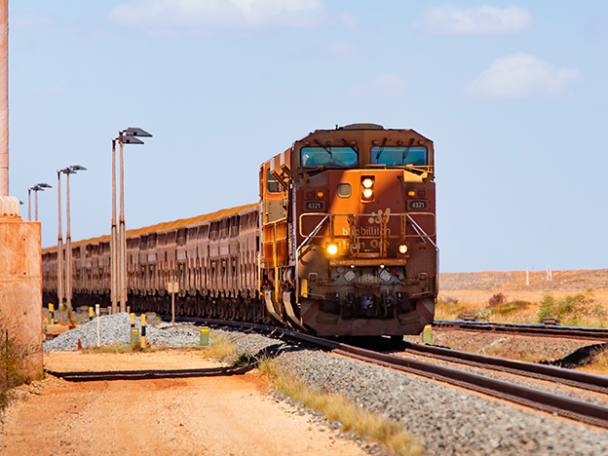- BHP to move from dual UK and Australian entities to just Australian, seeing it likely drop from the FTSE 100
- Record dividend in 2021 financial year driven by high iron ore prices
The largest member of the FTSE 100 by market capitalisation will drop its dual-listing structure and shift all shareholders to its Australian entity after reporting record dividends and profits for the 2021 financial year.
BHP (BHP) chairman Ken MacKenzie said getting rid of its Plc entity would make for a “simpler and more efficient” business. Shares will still be traded in London through a standard listing, meaning BHP will likely drop out of the FTSE 100.
The miner also used its 2021 results to announce it would package up its oil and gas assets with Woodside Petroleum (Aus:WPL) in an all-share deal that will hand shareholders a stake in the Australian energy company. Bernstein estimates BHP shareholders will get around a third of the new Woodside-plus-BHP-Petroleum company.
On the other end of the spectrum, chief executive Mike Henry gave the Jansen potash project in Canada the green light, taking BHP into the fertiliser market. This was a pet project of his predecessor Andrew Mackenzie, and the miner has already sunk billions into development. This next stage will cost $5.7bn (£4bn) and first ore is expected in 2027.
The 2021 numbers were almost as attention grabbing as the major strategic changes.
BHP’s underlying cash profits for the year were $37bn, a two-thirds uptick on last year. The final dividend of $2 a share takes the total payout for the year to $15bn or $3 a share, well above the previous record of $2.35 a share following the sale of its onshore US oil and gas operations in 2019.
High iron ore prices drove this financial performance, with realised prices of almost $160 a tonne in the six months to 30 June, taking the unit’s underlying cash profit up over 80 per cent to $26bn, even with a 17 per cent hike in unit costs. Copper earnings also surged, almost doubling to $8.5bn.
Henry said BHP was shifting its focus to commodities that were “favourably leveraged to the mega-trends of electrification and decarbonisation” like copper and nickel. Like fellow major Rio Tinto (RIO), BHP has benefited hugely from China’s massive stimulus during the Covid-19 pandemic which, coupled with iron ore supply issues, has driven the price of the key steel ingredient to a record high.
Analysts have flagged the reliance on iron ore for earnings as a risk to BHP, and prices have dropped this month as Chinese provinces committed to central government-mandated reduction targets, according to BMO Capital Markets. In the past month, the benchmark price has tumbled from over $200 a tonne to $167 a tonne.
The company estimates the listing “unification” will cost $400m-$500m. BHP said this was a reduction of $1.2bn on previous estimates, when it was pushed by activist fund Elliott Management to get rid of its Australian BHP Ltd company in 2017.
Making 'Ltd' the sole BHP would “result in franked distributions being paid directly to all BHP shareholders”, the company said, allowing some investors to realise gains from dividend tax relief. Franking credits are in place to avoid double taxation of profits, given companies pay tax on profits before handing them to shareholders.
This is a significant raft of moves from Henry and MacKenzie. Simplification is a positive, the oil and gas divestment looks a strong move and Jansen has passed a significant hurdle. What a day for BHP. Buy at 2,427p
Last IC View: Buy, 2,808p, 20 July 2021








